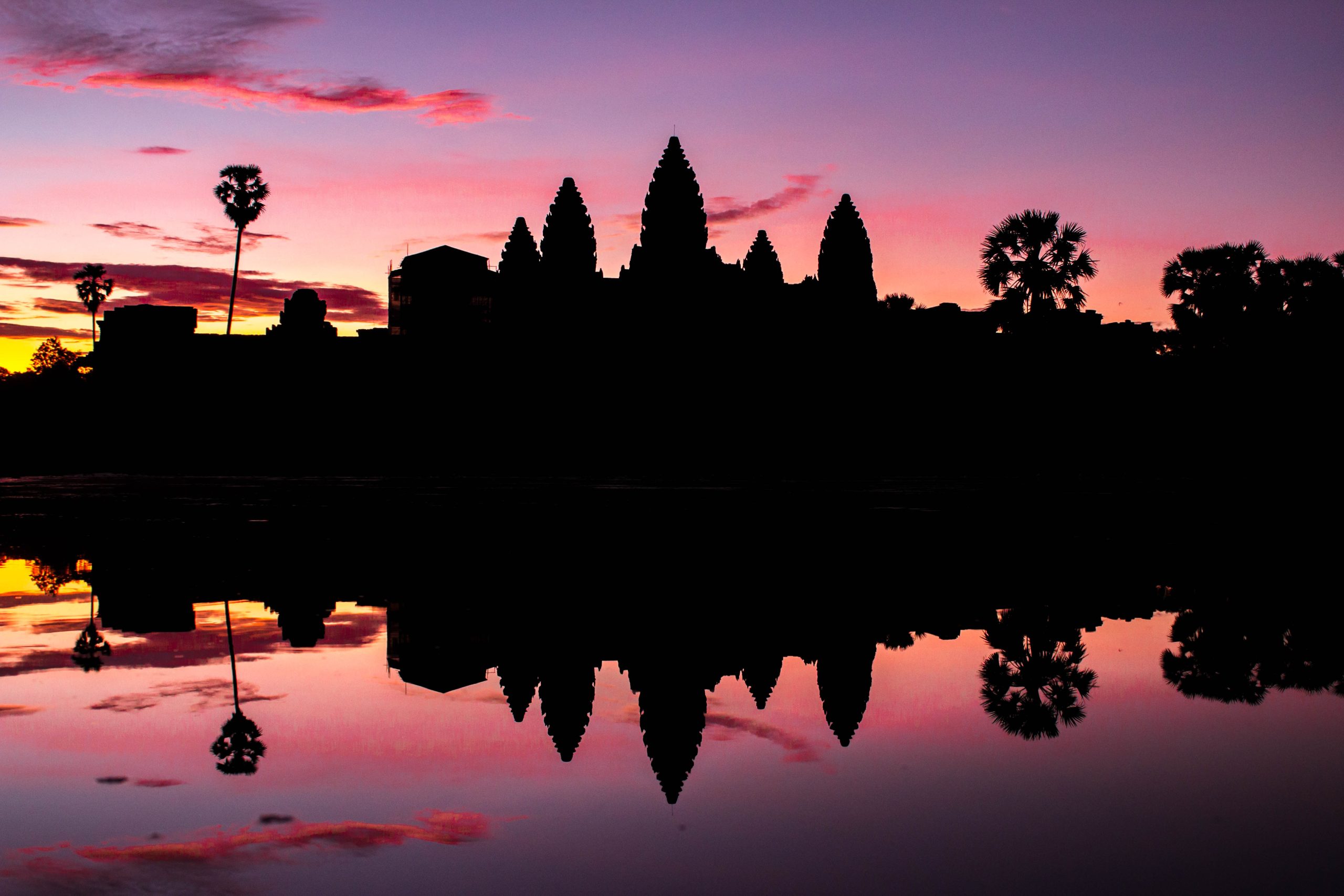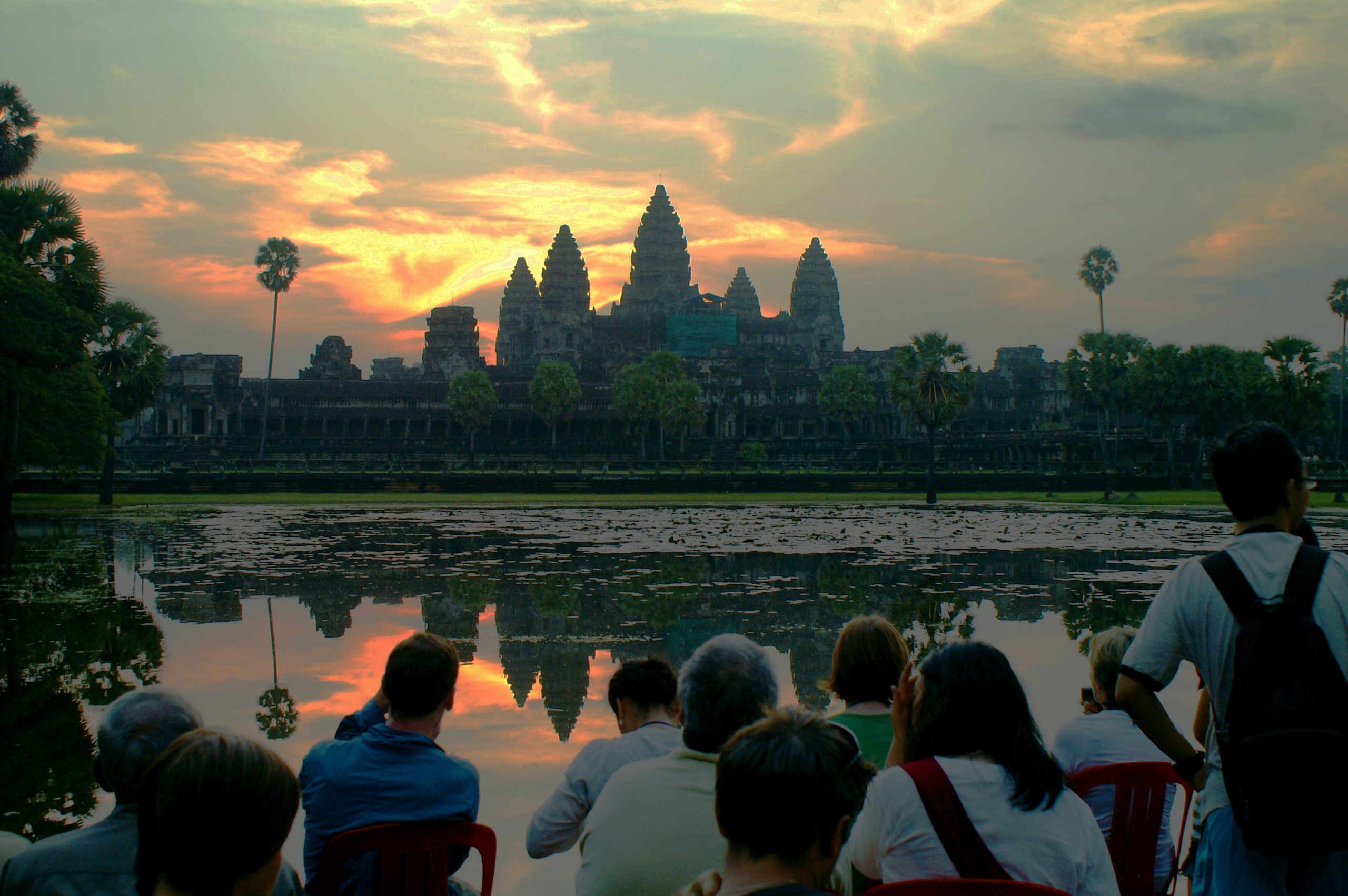Capturing the Perfect Angkor Wat Sunrise Photography Guide
Angkor Wat, located in Siem Reap, Cambodia, is not only a UNESCO World Heritage Site but also one of the most iconic and photogenic places on Earth. Its stunning architecture, intricate carvings, and serene reflection pools make it a must-visit destination for photographers. Among all the moments to capture, the Angkor Wat sunrise is arguably the most breathtaking. In this travel guide, Green Sun Travel will provide you with essential tips to ensure your perfect Angkor Wat Sunrise Photography.
Prepare for Angkor Wat Sunrise Photography
1. Season and Timing:
- Season: The dry season in Cambodia, from November to April, is the best time for capturing the Angkor Wat sunrise. During this period, the skies are generally clear, providing a better chance for stunning sunrise colors and reflections.
- Timing: Sunrise times change throughout the year, so it’s crucial to check local schedules. Websites, apps, or your hotel staff can provide this information. To secure a prime spot and set up your equipment, arrive at least 30-45 minutes before the expected sunrise time.
2. Tickets and Passes:
- To access Angkor Wat and the surrounding temples, you’ll need an Angkor Archaeological Park pass. These passes come in various durations, including 1-day, 3-day, and 7-day options. A multi-day pass is recommended if you want to explore the entire complex, as Angkor Wat is just one of many incredible temples in the area. The flexibility of a multi-day pass allows you to visit multiple sites at your own pace.
3. Equipment for Angkor Wat Sunrise Photography:
- Camera: Using a DSLR or mirrorless camera with manual settings is ideal for capturing the best possible sunrise photographs. These cameras provide control over exposure, focus, and other critical settings.
- Lens: A wide-angle lens, such as a 16-35mm, is highly recommended. This type of lens will allow you to capture the grandeur of Angkor Wat and its surroundings in a single frame.
- Tripod: A sturdy tripod is essential for long exposure shots during low light conditions at sunrise. It helps stabilize your camera and ensures sharp, clear images.
- Filters: Consider using ND (Neutral Density) and graduated filters to control exposure and light. ND filters allow for longer shutter speeds, creating beautiful effects with moving water or clouds. Graduated filters can help balance the brightness between the sky and foreground.
4. Location for the perfect Angkor Wat Sunrise Photography:

- The most popular spot for capturing the classic Angkor Wat sunrise shot is from across the reflecting pools in front of the temple. To secure a prime position with an unobstructed view, arrive early, as this spot can get crowded, especially during peak tourist seasons.
- For a unique perspective and different angles, consider exploring other vantage points. Nearby temples like Angkor Thom or Pre Rup offer fantastic opportunities to capture Angkor Wat from a distance. Sunrise shots from these locations can yield stunning silhouettes and varying compositions.
By taking these detailed considerations into account, you’ll be well-prepared to make the most of your visit to Angkor Wat and capture breathtaking sunrise photographs that showcase the beauty and majesty of this iconic temple.
Taking the perfect Angkor Wat Sunrise Photography
Composition:
- Frame Your Shot: Consider the elements within your frame carefully. Utilize the reflection pool, if possible, to capture the temple’s reflection, which adds symmetry and depth to your composition. Include lotus flowers, if they are in bloom, to introduce a sense of tranquility and color to your image. Fellow photographers can also serve as interesting subjects within the frame, showcasing the scale of Angkor Wat and the experience of witnessing the sunrise.
- Foreground Interest: Experiment with adding elements in the foreground, such as foliage or rocks, to create depth in your image. A well-chosen foreground element can lead the viewer’s eye towards the temple and the rising sun.
Camera Settings:
- Mode: Use manual mode on your camera to have full control over exposure settings. This control is essential for capturing the nuances of the changing light during sunrise.
- ISO: Keep your ISO as low as possible (e.g., ISO 100 or 200) to minimize digital noise, especially in low-light conditions.
- Aperture: Use a small aperture (e.g., f/8 to f/16) to achieve a deep depth of field, ensuring that both the foreground and the temple are in sharp focus.
- Shutter Speed: To capture the movement in the reflection pool and create a silky smooth sky, use a slow shutter speed (e.g., 5-30 seconds). A tripod is crucial to prevent camera shake during long exposures.
- White Balance: Set your white balance to ‘Daylight’ to ensure that colors appear natural and warm in the early morning light.
Focus:
- Manual Focus: Manually focus on a point about one-third into your frame to ensure both the temple and the foreground elements are sharp. Using auto-focus may result in the camera focusing on the wrong subject, especially in low light. Zoom in on your camera’s Live View screen to achieve precise manual focus.
Patience:
- Waiting for the Perfect Moment: Sunrise photography requires patience. As the sun rises, the quality of light changes rapidly, creating different moods and colors. Be prepared to adjust your settings and composition as the scene evolves. Often, the moments just before and after the sun breaches the horizon can yield the most captivating shots.
Post-Processing:

- Enhance Your Images: After capturing your Angkor Wat Sunrise Photography, use post-processing software like Adobe Lightroom to refine your photographs. Adjust exposure, contrast, and color balance to bring out the best in your shots while maintaining a natural and realistic appearance. Be cautious not to over-process, which can lead to unnatural-looking results.
Etiquette:
- Respect for the Temple and Others: Show respect for the sacredness of Angkor Wat and the experience of fellow photographers:
- Avoid using flash as it can disturb both the tranquility and the photography of others.
- Keep noise levels down and refrain from making loud noises.
- Stay on designated paths and respect any restricted areas.
- Be mindful of the local culture and customs; dress modestly when visiting the temple complex.
By following these composition tips, camera settings, and practicing proper etiquette, you can maximize your chances of capturing breathtaking and respectful Angkor Wat sunrise photographs that truly capture the magic of this iconic location.
Conclusion
The Angkor Wat sunrise is not just a photographic opportunity; it’s an experience that combines art, culture, and the majesty of nature. As you embark on this journey to capture that iconic moment, remember that it’s not just about the resulting photograph; it’s about the entire process, from planning your visit to savoring the anticipation and witnessing the unfolding beauty of the temple as the sun rises.
Angkor Wat, a testament to human ingenuity and spirituality, is more than just a stunning backdrop; it’s the heart and soul of Cambodia. The reflection pools, lotus flowers, and fellow photographers become your companions in the frame, adding depth, context, and shared experience to your image.
The camera settings you’ve chosen, from manual mode and low ISO to small apertures and slow shutter speeds, are tools in your creative arsenal. They enable you to capture the very essence of the moment: the ethereal dance of light and shadow, the calm ripples in the reflection pool, and the changing colors of the sky.
With careful focus, you ensure that the intricate details of Angkor Wat and the surrounding foreground elements are rendered with utmost clarity. Your patience is your greatest virtue as a sunrise photographer. It allows you to adapt to the ever-changing light and atmosphere, seizing that perfect moment when the sun bathes Angkor Wat in its golden embrace.
Post-processing becomes the final brushstroke on your canvas, allowing you to refine your images to match the vision you had in mind while maintaining the authenticity of the scene you witnessed.
And while technical prowess is essential, so too is your respect for the temple and your fellow photographers. In the quiet moments before dawn, amid the whispers of history and the soft clicks of camera shutters, you share a sacred space. It’s a space where the world comes together to witness the timeless beauty of Angkor Wat.
As you leave the temple complex, the memory of this experience lingers, and your photographs become more than just images; they are visual stories that encapsulate the essence of Angkor Wat. They are reminders of the tranquility of the morning, the reverence for history, and the artistry of nature and human creation.
So, as you plan your visit to capture the perfect Angkor Wat sunrise photography, remember that it’s more than just a shot—it’s an immersion into the soul of Cambodia and a journey of artistic expression. Embrace every aspect of this adventure, from the technical intricacies to the cultural nuances, and let your photographs tell the story of a moment that will forever resonate in your heart and in the hearts of those who view your work.







